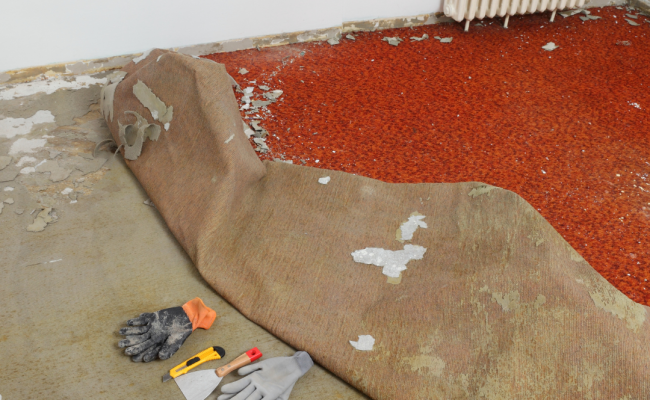In an era where environmental consciousness is at the forefront of global discussions, every action we take, no matter how small, can have significant ramifications. One often overlooked aspect of this discussion is the removal of carpets and its environmental impact. While it might seem like a mundane task, the repercussions of carpet removal extend far beyond the confines of our homes or offices. From the extraction of raw materials to the disposal of old carpets, each step in the process leaves a footprint on the environment. In this blog post, we delve into the environmental implications of carpet removal, shedding light on the various stages of its lifecycle and why it’s crucial to pay attention to them. Understanding these impacts is the first step towards making informed decisions and adopting more sustainable practices in our daily lives. Join us as we uncover the hidden costs of carpet removal and explore ways to minimize its environmental footprint.
When it comes to home renovations, the environmental impact of carpet removal is often underestimated. While the process may seem straightforward, every step—from extraction to disposal—leaves a mark on the planet. In this article, we peel back the layers to reveal the hidden environmental consequences of carpet removal. By understanding the true cost of this common home improvement task, we can take steps towards a more sustainable approach to flooring renovations.

Before a carpet even reaches your home, its journey begins with manufacturing—a process that consumes vast amounts of energy and resources. From the extraction of raw materials like petroleum for synthetic fibers to the water-intensive production of natural fibers like wool, the ecological footprint of carpet manufacturing is significant. By opting for sustainable materials and production methods, we can reduce the environmental impact of the carpets we choose.
The journey of a carpet doesn’t end at the manufacturing plant. Getting carpets from production facilities to homes and businesses requires transportation, which contributes to greenhouse gas emissions. Whether by truck, train, or ship, the logistics of carpet distribution add to the carbon footprint of this flooring option. Local sourcing and efficient transportation practices can help minimize emissions associated with carpet delivery.
Once a carpet reaches the end of its life cycle, the environmental impact continues. Carpet disposal presents a significant challenge due to its size, weight, and composition. In many cases, old carpets end up in landfills, where they contribute to environmental pollution and take up valuable space. By exploring recycling and repurposing options, we can divert carpets from landfills and give them a second life.
Carpet materials often contain a cocktail of chemicals, including volatile organic compounds (VOCs), flame retardants, and adhesives. During removal, these chemicals can be released into the air, posing risks to indoor air quality and human health. Proper ventilation and the use of low-VOC or non-toxic adhesives can help minimize exposure to harmful substances during carpet removal and installation.
The environmental impacts of carpet removal extend beyond our homes and into natural ecosystems. Land cleared for carpet manufacturing and disposal sites disrupts habitats and can lead to biodiversity loss. Additionally, the chemicals leaching from decomposing carpets can contaminate soil and water, further harming local ecosystems. Responsible land use practices and waste management strategies are essential for mitigating these impacts.
The lifecycle of a carpet is more than just the time it spends adorning our floors. From the moment it’s removed from our homes or commercial spaces, its journey continues, often ending in a destination that poses significant environmental challenges: the landfill. In this exploration, we trace the path of discarded carpets, uncovering the environmental impact at every stage of their disposal journey. Understanding this journey is crucial in confronting the sustainability issues surrounding carpet removal and waste management.
The journey of a discarded carpet begins with its extraction from the floor. Whether due to wear and tear, remodeling, or simply a desire for a change in décor, carpets are regularly replaced, leading to a steady stream of waste. The removal process involves tearing up the carpet, often accompanied by the removal of padding and adhesive materials. This initial step sets the stage for the environmental challenges to come.
Once removed, carpets must be transported from their point of origin to their final destination. This journey involves logistical challenges, including loading, transportation, and unloading. Whether transported by trucks, vans, or other vehicles, the process consumes fuel and emits greenhouse gasses, contributing to environmental pollution. The transportation of discarded carpets adds to their overall environmental footprint, underscoring the need for efficient waste management practices.
Upon arrival at waste management facilities, discarded carpets undergo sorting and processing. This stage involves separating carpets from other waste materials and preparing them for disposal or recycling. Sorting carpets by material type is crucial for effective recycling efforts, as different fibers require different processing methods. However, inadequate sorting practices can result in contamination and reduce the recyclability of carpet materials.
For many discarded carpets, the journey ends at the landfill. Once sorted and processed, carpets deemed unsuitable for recycling are disposed of in landfills, where they join a vast array of other waste materials. The disposal of carpets in landfills presents several environmental challenges, including the release of methane—a potent greenhouse gas—from decomposing organic materials in the waste stream. Additionally, the sheer volume of carpet waste occupying landfill space exacerbates issues of land scarcity and habitat destruction.
The journey of discarded carpets from floor to landfill carries significant environmental implications. Beyond the immediate concerns of landfill space and methane emissions, carpet disposal contributes to broader environmental issues, including resource depletion, pollution, and habitat destruction. The extraction and processing of raw materials, the energy-intensive manufacturing process, and the eventual disposal of carpets all contribute to these environmental impacts, highlighting the need for more sustainable alternatives.
Carpet removal may seem like a minor household task, but its carbon footprint tells a different story. From energy-intensive manufacturing to transportation emissions and landfill contributions, every aspect of carpet removal adds to its environmental impact. Let’s take a closer look at the carbon footprint of carpet removal and its implications for sustainability.
The environmental impact of carpet removal is a crucial concern that demands attention. As evidenced by the practices of JUNKAHAULICS in Raleigh, businesses play a significant role in mitigating environmental harm through responsible disposal and recycling methods. Understanding the ecological footprint of such processes underscores the importance of sustainable choices in both residential and commercial settings. By prioritizing eco-friendly practices, companies like JUNKAHAULICS not only contribute to environmental preservation but also set a precedent for others to follow, ultimately shaping a more sustainable future for generations to come.


JUNKAHAULICS